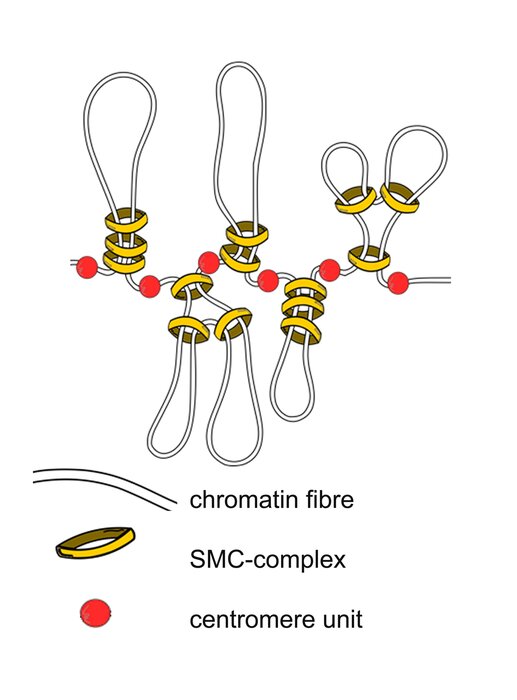Monocentromeres are typical for the chromosomes of most animals and plants. The centromere is necessary for the transport of the chromosomes and represents the connection point between the chromatids. This is how the classic X-shape of the chromosome is formed. However, in an estimated 350,000 species, including butterflies, nematodes and some plants, the centromeres are distributed along the entire length of the chromosome. For this reason, they are called holocentromeres.
A research team at the IPK Leibniz Institute has now used modeling to investigate how the centromere changes dynamically in the course of a cell division in these species. The results have now been published in the journal Nucleic Acids Research.
Holocentric plant species such as Cyperus papyrus were already of great importance to the ancient Egyptians. “This fiber plant was used to make one of the first papers back then,” says Prof. Dr. Andreas Houben, head of the Chromosome Structure and Function research group at the IPK Leibniz Institute. What all these species have in common is an evolutionary advantage. If a piece of the chromosome breaks off due to mutagenesis, the corresponding fragment is lost in monocentric species. “This does not happen in holocentric species, because there the centromere extends over the entire chromosome,” explains the IPK scientist.
However, the research team now wanted to know how the process of cell division takes place in these species. First, the spindle fibers dock onto the centromere and then pull the two chromatids apart. “This works like a rubber band,” explains Prof. Dr. Andreas Houben. In the so-called interphase, the holocentromere falls apart and innumerable centromeric units are formed, which are evenly distributed in the cell nucleus. In the subsequent mitosis, the chromosome condenses and the centromeric units form step by step a linear centromere along the chromatids.
With the help of modeling, IPK junior scientist Dr. Amanda Câmara from the Domestication Genomics research group led by Dr. Martin Mascher was able to prove that a so-called SMC protein complex plays a decisive role in this process.
“When the protein complex comes close to a centromeric unit, it becomes fixed on the chromatin thread,” explains Dr. Amanda Câmara. As a result, several loops are formed, the chromosome is thus condensed and a centromeric line is formed, which ultimately gives rise to the new holocentromere. “This makes the SMC complex quite essential for the dynamics of holocentromeres. This possible function of the SMC discovered through modeling was previously unknown,” says the IPK scientist.
In the next step, the researchers at IPK will try to confirm the results of the modeling experimentally.
Unique centromere type discovered in the European dodder
More information:
Amanda Souza Câmara et al, A simple model explains the cell cycle-dependent assembly of centromeric nucleosomes in holocentric species, Nucleic Acids Research (2021). DOI: 10.1093/nar/gkab648
Provided by
Leibniz Institute of Plant Genetics and Crop Plant Research
Citation:
Protein complex SMC shown to ensures the dynamics of holocentromeres (2021, August 6)
retrieved 8 August 2021
from https://phys.org/news/2021-08-protein-complex-smc-shown-dynamics.html
This document is subject to copyright. Apart from any fair dealing for the purpose of private study or research, no
part may be reproduced without the written permission. The content is provided for information purposes only.



